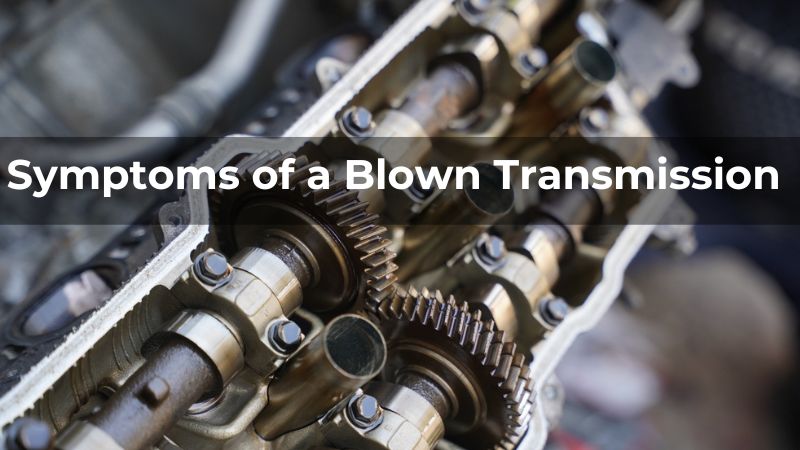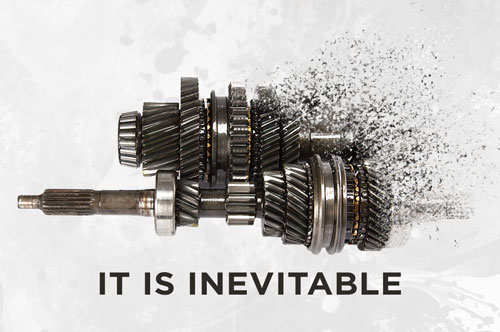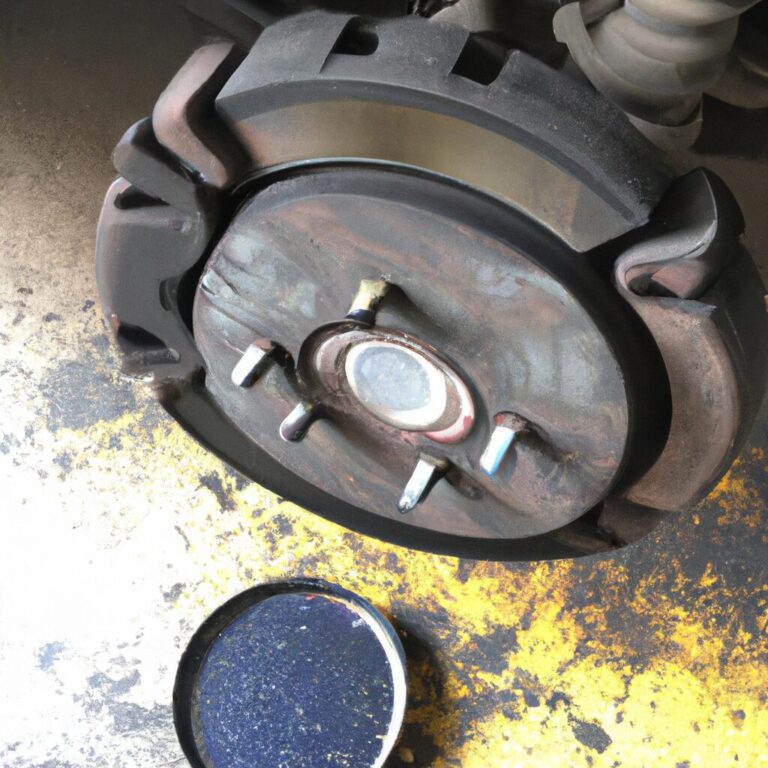How to Fix Blown Transmission
To fix a blown transmission, consult a professional mechanic for proper diagnosis and repairs promptly. Ignoring transmission issues can lead to further damage and costly repairs.
A blown transmission can be a major headache for any vehicle owner. Whether caused by wear and tear or neglecting regular maintenance, dealing with this problem can be both frustrating and expensive. However, by understanding the common signs of a blown transmission and taking immediate action, you can potentially avoid a complete breakdown and costly repairs.
In this guide, we will explore some effective strategies to fix a blown transmission and get your vehicle back on the road in optimal condition. So, let’s dive in and learn how to address this issue efficiently and effectively.
Diagnosing Blown Transmission
Diagnosing a blown transmission is critical to determine the extent of the issue and the required repairs. By identifying warning signs, performing a fluid check, and assessing transmission noises, you can effectively diagnose a blown transmission.
Warning Signs Of A Blown Transmission
To diagnose a blown transmission, it’s essential to recognize the warning signs:
- Slipping gears or sudden shifts
- Burning smell or overheating
- Fluid leaks beneath the vehicle
- Dashboard warning lights related to transmission
Performing A Fluid Check
Start by locating the transmission dipstick and checking the fluid levels. Ensure that the fluid is at the appropriate level and appears clean. Discolored or burnt-smelling fluid may indicate transmission issues.
Assessing Transmission Noises
Listen for unusual noises such as grinding, whining, or clunking while the vehicle is in gear. These sounds can signal potential transmission problems and should be investigated promptly.
Repairing A Blown Transmission
When dealing with a blown transmission, repairing it can be a daunting task. However, understanding the key steps involved can help you get your vehicle back on the road smoothly. Here are some essential methods to consider when it comes to repairing a blown transmission:
Replacing Damaged Transmission Components
One way to address a blown transmission is by replacing any damaged components within. This may include solenoids, clutch packs, or torque converters that have malfunctioned and caused the transmission to fail. By identifying and replacing these faulty parts, you can restore the functionality of the transmission.
Rebuilding The Transmission
In some cases, a blown transmission may require a complete rebuild. This involves disassembling the transmission, inspecting all components, cleaning and replacing worn-out parts, and reassembling it back to its original state. Rebuilding the transmission ensures that all internal parts are in optimal condition, preventing further issues.
Seeking Professional Help
If repairing or rebuilding the transmission seems overwhelming, it’s essential to seek professional help. Certified mechanics specialize in diagnosing and fixing transmission problems efficiently. By entrusting the repair to experts, you can ensure that the job is done correctly and your vehicle operates smoothly.
Preventing Blown Transmission
Regular maintenance and fluid changes are crucial to prevent a blown transmission. Avoid excessive towing or hauling to prolong your transmission’s lifespan. Drive with care to ensure smooth operation.
Regular Maintenance And Fluid Changes
Maintain your vehicle according to the manufacturer’s schedule. Regularly check transmission fluid levels and replace as needed. Ensure all components are functioning properly to prevent issues.
Avoiding Excessive Towing Or Hauling
Do not exceed the recommended towing capacity of your vehicle. Avoid overloading with heavy cargo to prevent strain on the transmission. Use caution when carrying loads.
Driving With Care
Practice smooth acceleration and braking to reduce wear on the transmission. Avoid sudden shifts or aggressive driving. Take care when navigating rough terrain or potholes.

Credit: www.electronicshub.org
Common Mistakes To Avoid
When it comes to fixing a blown transmission, it’s crucial to be aware of the common mistakes that could exacerbate the problem. Ignoring warning signs, using the wrong type of transmission fluid, and neglecting routine maintenance are all errors that can have serious consequences. By avoiding these blunders, you can effectively address the issue and prevent further damage to your vehicle’s transmission.
Ignoring Warning Signs
Ignoring the warning signs of a transmission problem can lead to significant issues down the line. Some symptoms to look out for include slipping gears, delayed shifting, and leaking fluid. By addressing these indicators promptly, you can prevent further damage to your transmission and potentially save on costly repairs.
Using The Wrong Type Of Transmission Fluid
Using the wrong type of transmission fluid can exacerbate transmission issues. It’s essential to use the specific fluid recommended by your vehicle’s manufacturer. Using improper fluid can lead to poor lubrication and increased friction, which can cause further damage to the transmission.
Neglecting Routine Maintenance
Neglecting routine maintenance is a common mistake that can lead to transmission problems. Regular fluid flushes, filter replacements, and inspections can help prevent major issues. By staying up to date with maintenance, you can extend the lifespan of your transmission and avoid costly repairs.
Cost Of Fixing A Blown Transmission
Experiencing a blown transmission can be a nightmare for any vehicle owner. Not only does it cause inconvenience, but it also comes with a hefty price tag for repair. Understanding the factors affecting the repair costs, evaluating the expenses of DIY versus professional repair, and finding affordable solutions are key steps in effectively managing the financial implications of a blown transmission.
Factors Affecting Repair Costs
Several factors come into play when determining the cost of fixing a blown transmission:
- Vehicle make and model: The complexity and availability of transmission parts can significantly impact the cost of repair.
- Severity of damage: The extent of damage to the transmission components will affect the required repairs and subsequently the cost.
- Transmission type: Automatic transmissions often tend to be costlier to repair compared to manual transmissions due to their intricate design and more expensive parts.
- Local labor rates: Repair costs may vary based on the region and the hourly rates charged by local mechanics.
Diy Vs Professional Repair Expenses
When faced with a blown transmission, one might consider saving money by attempting a do-it-yourself repair. While DIY repairs may seem appealing, it’s important to consider the following:
- Expertise: Repairing a blown transmission requires specialized knowledge and skills. A professional mechanic with experience and access to the right tools can ensure a correct diagnosis and a reliable fix.
- Time commitment: DIY repairs can be time-consuming, especially for those without prior experience. Depending on the individual’s availability and knowledge, the lengthy process could potentially result in prolonged vehicle downtime.
- Cost savings: While DIY repairs can save money on labor costs, there’s a higher risk of making mistakes or overlooking other underlying issues. This could lead to more extensive damage and ultimately higher expenses.
Considering these factors, it is often advisable to enlist the services of a professional mechanic to ensure a proper and long-lasting repair.
Finding Affordable Solutions
While fixing a blown transmission can be costly, there are ways to find more affordable solutions:
- Independent mechanics: Independent repair shops often offer more competitive prices compared to dealerships, while still providing quality service.
- Comparison shopping: Obtaining multiple quotes from different mechanics allows for the selection of a reasonably priced repair shop without compromising on quality.
- Used or rebuilt parts: Depending on the severity of the damage, using used or rebuilt transmission parts can be a cost-effective alternative to purchasing brand new components.
- Extended warranties: If the vehicle is under warranty, exploring extended warranty options may help lessen the financial burden of repairing a blown transmission.
By considering these affordable solutions, vehicle owners can minimize the financial strain associated with fixing a blown transmission.

Credit: generaltransmissionreno.com

Credit: aamcocentralflorida.com
Frequently Asked Questions Of How To Fix Blown Transmission
Is It Worth Fixing A Blown Transmission?
Yes, it is worth fixing a blown transmission.
What Happens When Transmission Blows?
When the transmission blows, it can cause problems shifting gears and may lead to loss of power and strange noises. It is important to address the issue immediately to avoid further damage to the vehicle. Regular maintenance can help prevent transmission issues.
Can You Still Drive With A Blown Transmission?
Driving with a blown transmission is not safe and can cause further damage. It’s best to have it towed for repairs.
Can You Fix A Transmission Without Replacing It?
Yes, transmission repairs can often fix issues without needing a full replacement. Regular maintenance and timely repairs can extend the transmission’s lifespan.
Can A Blown Transmission Be Fixed?
Yes, a blown transmission can be repaired by a professional mechanic, depending on the extent of damage.
How Do I Know If My Transmission Is Blown?
Signs of a blown transmission include slipping gears, unusual noises, leaking fluid, burning smells, and difficulty shifting.
What Causes A Transmission To Blow?
A blown transmission can be caused by overheating, lack of fluid, clutch problems, worn-out gears, or mechanical failure.
Conclusion
Addressing a blown transmission requires careful assessment and prompt action. By identifying the signs and seeking professional help, you can mitigate potential risks and costly repairs. Remember, regular maintenance and timely attention to any issues can prolong the lifespan of your vehicle.
Don’t ignore the warning signs!

